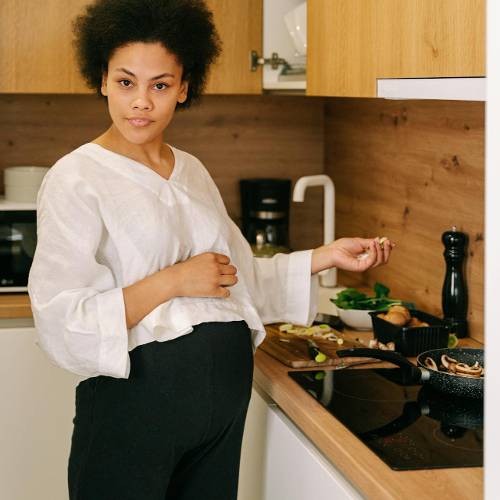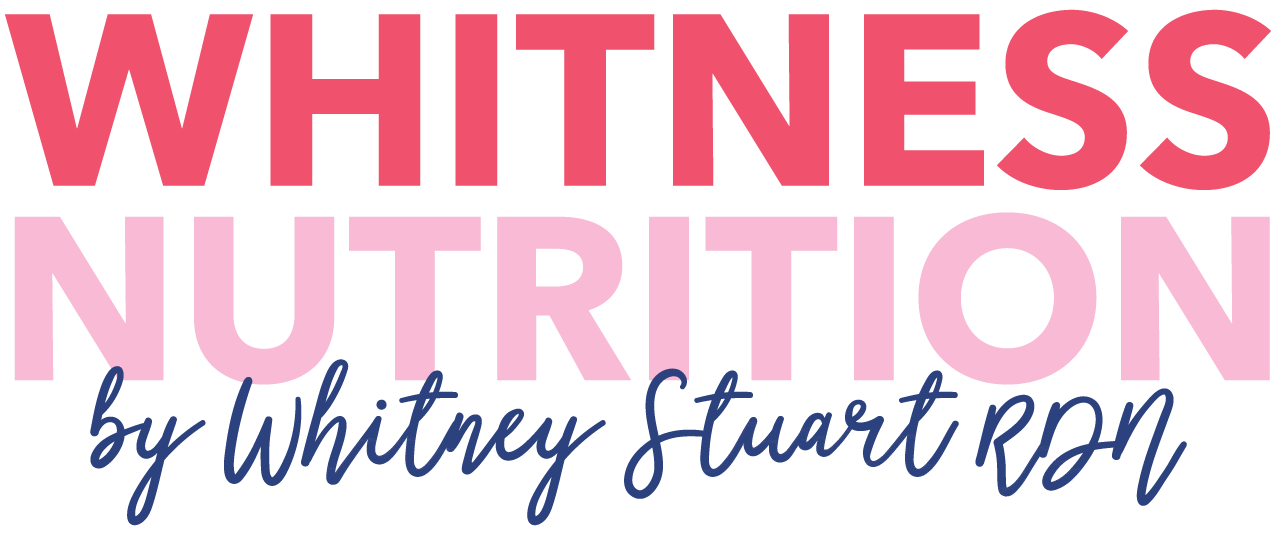What to Eat and Avoid Before a Pregnancy Glucose Test
Are you expecting a bundle of joy soon? Chances are you’re daydreaming about holding your newborn soon, amidst eating right and Doctor or OB checkups. Several tests are there to determine you and your baby’s health. Pregnancy glucose test is one such test that confirms the presence of gestational diabetes. About 2-10% of pregnant women may get gestational diabetes in the US alone. So, it’s crucial to get the screening done.
Apart from genetics, diet plays a role in maintaining blood sugar levels. Knowing what to eat before glucose tests and eating healthy during pregnancy, in general, can help maintain these levels. Keep reading as I discuss what you can eat or avoid before the test.
What Is a Pregnancy Glucose Test?
A pregnancy glucose test, aka glucose screening test, is a simple procedure to check for gestational diabetes. It develops during pregnancy when the body can’t make enough insulin or use the insulin it does produce effectively.

Pregnancy glucose tests are also called:
- Oral Glucose Tolerance Test (OGTT)
- GDM dx
- Glucola test
- Glucose screening
- Gestational diabetes screening
- One-hour glucose challenge test
The early detection of gestational diabetes can prevent risks to the mother’s health and the baby. The test is done to prevent the following complications:
- Larger than average baby (macrosomia)
- Difficulty delivering the baby vaginally (and increased risk of needing a C-section)
- Preeclampsia
- Low blood sugar in the newborn
Glucose Screening vs. Glucose Tolerance Test
The glucose screening test is done after consuming a sugary drink. A blood sample is drawn after one hour of drinking it. This is an initial test to see the normal glucose levels in the blood. On the other hand, a glucose tolerance test checks if the blood sugar level is high.
You’ll be asked to stay on an empty stomach for at least 8 hours and then drink the glucose solutions. Blood samples will be drawn at intervals of 1-3 hours to detect the blood sugar levels.
The normal blood glucose level will be 95 mg/dL (5.3 mmol/L) and considered normal till 140 mg/dl. Blood glucose level after one hour of drinking glucose solution should be lower than 180 mg/dL (10 mmol/L). Similarly, it should be below 155 mg/dL (8.6 mmol/L) two hours after. Three hours after drinking the solution, the test should be under 140 mg/dL (7.8 mmol/L).
In case the test results are high in any category, it implies a positive for gestational diabetes. You’ll have to modify your diet and constantly monitor your blood sugar throughout the pregnancy.
What to Eat Before the Pregnancy Glucose Test
To get the pregnancy glucose test results accurately, you must pay attention to what to eat before the glucose test.

No stunts. Keep meals balanced and familiar the day before and, if your clinic allows eating, the morning of testing.
Build your plate like this:
- Protein (anchor): eggs, Greek yogurt, cottage cheese, tofu/tempeh, chicken/turkey sausage, salmon or tuna.
- Non‑starchy vegetables: spinach, peppers, mushrooms, cucumbers, zucchini, leafy greens.
- High‑fiber carbs (modest portions): steel‑cut oats, quinoa, brown rice, sprouted or 100% whole‑grain bread, beans/lentils.
- Healthy fats: avocado, olive oil, nuts/seeds, tahini or nut/seed butter.
Simple breakfast ideas (only if eating is allowed):
- Scrambled eggs with sautéed spinach and avocado.
- Greek yogurt + chia + a few berries + walnuts.
- Tofu scramble with peppers/mushrooms; side of cucumbers.
- Cottage cheese with cinnamon and hemp seeds; ½ slice sprouted toast with almond butter.
Hydrate well, keep caffeine consistent with your usual routine, and try for decent sleep (your secret performance enhancer).

Healthy Fats
Healthy fats provide vitamins and minerals for the overall health of the body. Fats do not cause a glucose spike. Include seeds, olives, olive oil, nuts, and avocado in your diet for healthy fats, and ditch ultra-processed foods that contain trans fat, hydrogenated oils, and butter.
Planning Your Meals
Wondering what to eat before glucose test and how to maintain blood sugar? Here is some meal inspiration for you:
Breakfast Meal Ideas
- Cottage cheese protein pancakes spread with nut butter
- Steel-cut oats cooked with an egg, cinnamon and hemp seed
- Eggs with sautéed spinach and sliced avocado
- Two hard-boiled eggs with 2 kiwis and raw almonds
- Vegan chickpea open sandwich made with avocado oil mayo, celery and onion (use a single piece of whole wheat bread)
- Broccoli and cheese omelet
- Spinach and tofu stir fry
Lunch Meal Ideas
- Kidney bean soup with ground beef, brown rice, cucumber salad
- Grilled chicken with quinoa/brown rice and steamed veggies
- Grilled chicken with Carrot and zucchini salad with hummus dressing and a side of quinoa
Dinner Meal Ideas
- High protein chicken noodle soup
- Grilled/baked salmon over a bed of asparagus with a side of brown rice
- Egg-fried rice made with Kaizen rice
- Whole wheat burrito with ground turkey, cauliflower rice and grilled peppers.
Healthy Postprandial Snacks
- Walnuts and berries
- Hummus and carrot
- Roasted edamame
- Greek yogurt with blueberries and strawberries
Dinner Ideas for the Night Before the PREGNANCY GLUCOSE Test
- Steamed broccoli with grilled chicken
- Kale, cucumber and cottage cheese salad
- Steak fajitas made with Egg life wraps.
What Foods to Avoid Before Pregnancy Glucose Testing?
We’re not trying to “beat” the test; we’re avoiding variables that can swing it.
- Large fruit/veggie smoothies: Blending pulverizes fiber so sugar hits faster. If you do one, keep it small and add protein + fat (e.g., protein powder + Greek yogurt + chia).
- Sugary drinks: soda, juice, sweetened coffees, energy drinks, and mocktails spike quickly and add little nutrition.
- Refined grains on their own: white bread, crackers, cookies, pastries, or a big bowl of white pasta without protein/fat. If you have them, eat last and pair with protein or fat.
- New supplements or stimulants: Save experiments for another week unless your provider okays them.
These are the realistic foods to avoid before pregnancy glucose test so your results reflect your usual physiology—not a sugar roller coaster.
Foods to Eat vs Avoid
| Eat Before Glucose Test | Avoid Before Glucose Test |
| Scrambled eggs | Juice or soda |
| Avocado toast (whole grain) | Smoothies with fruit |
| Veggies + hummus | White bread or bagels |
| Salmon with brown rice | Sugary cereal |
| Steel-cut oats with protein | Candy, pastries |
How to “Pass” the Glucose Test Pregnancy (No Hacks—Just Facts)
Let’s translate how to pass the glucose test pregnancy into what actually helps: accuracy and comfort. Here are practical gestational diabetes test tips:
- Follow your clinic’s instructions to the letter. If they say fast, fast. If they say eat normally, do that.
- Keep meals balanced the day before. Protein + veg + high‑fiber carbs + healthy fats. No last‑minute extremes.
- Hydrate steadily. Aim for consistent water intake; dehydration won’t help how you feel sitting through timed draws.
- Move gently. A 15–20 minute walk after meals can improve glucose handling without overdoing it.
- Prioritize sleep. Even a single short night can nudge glucose up. Do what you can—screens down, lights low.
- Day‑of breakfast (only if eating is allowed): choose protein‑forward (eggs + veg; unsweetened Greek yogurt + nuts). Skip pastries and sweet lattes.
Remember: the glucose tolerance test pregnancy (OGTT) is diagnostic. The goal isn’t to “trick” it; it’s to get clean data so you get the right support.
How Do You Pass the Pregnancy Glucose Test?
The normal range of pregnancy glucose screening tests is a blood sugar level equal to or below 140 mg/dL 1 hour after drinking the glucose liquid. The test results between this range will show you don’t have gestational diabetes.
This blood glucose test pregnancy is conducted to ensure you and your baby are not at health risk due to high blood sugar. So, there is no concept of passing or failing the test. Even if your test results are high 1 hour after drinking the glucose solution, the test will be conducted again for two and three-hour intervals to confirm the results.

What Happens If You Fail the Pregnancy Glucose Test?
First, breathe. An elevated 1‑hour screen is not a diagnosis; it’s a nudge to take the 3‑hour OGTT for clarity. If gestational diabetes is confirmed, your plan is straightforward:
- Nutrition coaching to build low‑glycemic, satisfying meals.
- Glucose monitoring (finger‑sticks or CGM) to see how real meals land.
- Activity guidance to use light movement as a glucose‑lowering tool.
- Medication or insulin if lifestyle alone isn’t enough (no shame, just tools).
Plenty of people manage GDM smoothly and deliver healthy babies. Postpartum, you’ll be re‑screened and can keep the same balanced habits that supported you during pregnancy.
Alternatives to the Traditional Glucose Test
If you’re sensitive to dyes or additives, talk to your provider about non‑toxic glucose test alternatives. Some clinics offer dye‑free dextrose solutions (lemon‑lime, “cleaner‑label” options) that meet testing standards. A few practices may approve:
- A week of capillary finger‑sticks to evaluate real‑life post‑meal numbers.
- A short‑term CGM (continuous glucose monitor) to track patterns.
Policies vary, and not all substitutes are validated or accepted the same way as the standard drink, so get approval first.
Quick Clarifier: What Is Glucola Test?
You’ll hear the term a lot. What is Glucola test? It’s the common brand name for the standardized glucose beverage used in screening and diagnostic protocols. Your clinic may use Glucola or a comparable solution; either way, the goal is a consistent carbohydrate dose so results are reliable.
Tests That Confirm Gestational Diabetes (Glucose Tolerance Test Pregnancy + What Is Glucola Test?)
What is Glucola test? It’s the common brand name for the standardized sweet drink used in screening and diagnostic protocols. The consistent carbohydrate dose is the point; it lets your care team compare your results to validated cutoffs.
Two-step process (most common):
1) 1‑hour glucose challenge (screen):
- You drink a 50‑gram glucose beverage (often Glucola or an equivalent).
- Blood is drawn 1 hour later.
- Many clinics do not require fasting for this step; follow your clinic’s instructions.
- If your value meets/exceeds the lab’s threshold (often 130–140 mg/dL, lab‑specific), you’ll do the longer test.
2) 3‑hour OGTT (diagnostic glucose tolerance test pregnancy):
- Fast overnight (8–12 hours) unless told otherwise.
- A fasting sample is drawn, you drink a 100‑gram glucose beverage, then blood is drawn at 1, 2, and 3 hours.
- Labs use different reference ranges; a common set (for context) is: fasting ≤95 mg/dL, 1‑hr <180, 2‑hr <155, 3‑hr <140. Typically, two or more elevated values confirm gestational diabetes.
If your clinic uses a one‑step 75‑gram OGTT: You’ll fast, drink 75 g of glucose, and have draws at fasting, 1 hour, and 2 hours in a single visit.
Quick prep notes: The drink can feel very sweet. Plan to sit for a while, bring water (if allowed), and pack a protein‑rich snack for after your final draw.
Prefer a cleaner label? Ask about non-toxic glucose test alternatives (e.g., dye‑free dextrose solutions). Policies vary; get approval before assuming substitutions will be accepted.
Tips to Support Healthy Blood Sugar Before Your Test
There’s no hack to outsmart physiology. “Passing” means getting an accurate snapshot so you get the right support. Use these practical gestational diabetes test tips:
- Follow instructions exactly. If your clinic says fast, fast. If they say “eat normally,” do that.
- Keep meals balanced the day before. Build plates with protein + non‑starchy veg + high‑fiber carbs + healthy fats.
- Hydrate consistently. Steady water intake helps you feel better during timed draws.
- Move gently. A 15–20 minute walk after meals the day before can support glucose handling without overdoing it.
- Prioritize sleep. Even one short night can nudge glucose up; aim for an earlier wind‑down.
- Day‑of breakfast (only if eating is allowed): Choose protein‑forward options (eggs with veggies; unsweetened Greek yogurt with nuts). Skip pastries and sweet lattes.
- Hold off on “new to you” supplements or stimulants. Stick to your normal routine unless your provider advises otherwise.
- Med review. If you take medications that affect glucose (e.g., steroids), confirm instructions with your provider.
Think of this section as “how to pass the pregnancy glucose test” without games—just habits that keep your results clean and representative.
The Breakfast Pivot That Quieted the Panic
I’m a dietitian who champions whole foods, low sugar or no sugar added choices, high‑protein plates, and low‑glycemic balance—especially for overwhelmed, busy moms. I’ve watched fear turn into calm when we simplify what to eat and avoid before the glucose test in pregnancy: a protein anchor, fiber‑rich carbs, and nourishing fats, plus tiny post‑meal walks.
One morning, a patient—let’s call her L.—arrived anxious, exhausted, and discouraged. She dreaded repeating gestational diabetes. I offered a simple, proven blueprint: swap the syrupy latte and sweet cereal for eggs or Greek yogurt, add avocado or almonds, keep carbs complex and modest, and take a gentle ten‑minute stroll after meals. The goal wasn’t perfection; it was steadier energy, steadier numbers, steadier confidence.
Later, reflecting on the week’s visits, I wrote this in my notes:
“One of my patients had gestational diabetes in her first pregnancy and wanted to avoid it this time. By adjusting her breakfast and walking after meals, she passed her glucose test with flying colors.”
Her relief was contagious; my heart felt lighter. That tiny breakfast pivot—quick, practical, realistic—became her linchpin. She felt empowered, reassured, and resilient, not restricted. She kept a calm cadence: scramble eggs with spinach, fold cottage cheese into oats, sip water, walk. When cravings roared, she paired fruit with nuts; when worry surged, we returned to the same steady scaffold.
If you’re nervous, hear this: your body isn’t broken. It’s adaptable. Before testing, build a savory, satisfying plate; after, take a walk. Skip sugary drinks and ultra‑processed pastries; choose real food you enjoy. This small, strategic shift can feel like a breakthrough—clear, humane, and doable. And that confidence? It’s contagious, buoyant, and sustainable, even on your busiest days.
What Happens If You Fail Glucose Test Pregnancy?
If your 1‑hour screen is elevated, it doesn’t diagnose anything—your next step is the 3‑hour OGTT for a definitive answer. If the diagnostic test confirms gestational diabetes, here’s what typically follows:
- Nutrition guidance focused on low‑glycemic, whole‑food meals that are realistic (protein, fiber, healthy fats, smart carbs).
- Glucose monitoring at home (finger‑sticks or, in some practices, a short‑term CGM) to see how real meals land.
- Movement plan (gentle, regular activity) to use your muscles as a glucose sink.
- Medication or insulin if lifestyle tools aren’t enough—no shame, just another lever to protect you and baby.
- Postpartum follow‑up to reassess glucose and map prevention steps.
Plenty of people manage GDM smoothly and deliver healthy babies. The same balanced approach that helps during pregnancy supports long‑term metabolic health afterward.
FAQs About Glucose Screening During Pregnancy
 Do I need to fast?
Do I need to fast?
It depends on the test. Most 1‑hour screens are non‑fasting; the 3‑hour OGTT is usually fasting. Follow your clinic’s protocol.
Can skipping a meal help me “pass”?
No. Skipping can make you feel worse and doesn’t improve accuracy. Eat as instructed (or fast if told to).
What to Eat Before the Pregnancy Glucose Test?
Eat a high-protein, low-sugar breakfast such as scrambled eggs with avocado or a protein smoothie with spinach and nut butter. Avoid sugar, fruit juices, and refined carbs to support accurate results.
Could I get a false positive?
Lab errors are uncommon. More often, results reflect timing (not fasting when required), acute illness, certain meds, poor sleep, or a very high‑sugar meal right before a non‑fasting screen. The diagnostic OGTT clarifies the picture.
What should I eat the day before?
Balanced, familiar meals: protein + non‑starchy vegetables + high‑fiber carbs + healthy fats. This is your safest bet for what to eat before glucose test pregnancy without introducing variables.
What should I avoid?
Large sugary drinks, big fruit smoothies (pulverized fiber), and refined carbs eaten alone—these are the realistic foods to avoid before pregnancy glucose test so your results reflect your usual physiology.
Are there non‑toxic glucose test alternatives?
Some clinics offer dye‑free or additive‑light glucose solutions that meet standards. A few may allow monitored alternatives or short‑term glucose tracking, but substitutions require provider approval and aren’t universally accepted.
What’s the best timing?
Most screening occurs between 24–28 weeks. If your provider suggests earlier testing due to risk factors, follow their lead.
Get the concise, evidence‑based checklist for calm, confident test day—perfect for busy mornings. Download the Quick Guide




